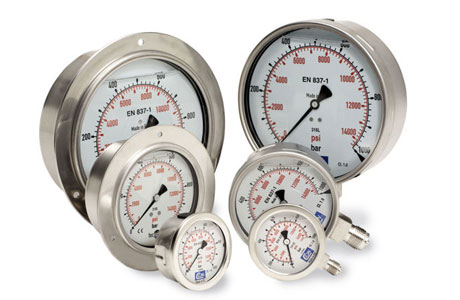What Is Gauge Pressure?
Key Takeaway
Gauge pressure is the pressure of a fluid measured relative to atmospheric pressure. Unlike absolute pressure, it excludes atmospheric pressure. For example, when a tire pressure gauge shows 30 psi, it means the tire pressure is 30 psi above atmospheric pressure.
Gauge pressure is commonly used in industrial and everyday applications like pipelines, boilers, and HVAC systems. If the pressure inside a system matches atmospheric pressure, the gauge reading will show zero.
Definition and Importance of Gauge Pressure
Gauge pressure is a fundamental concept in the field of pressure measurement, representing the pressure relative to atmospheric pressure. It plays a significant role in various applications, from automotive and aerospace industries to everyday household appliances. Understanding gauge pressure is essential for accurate monitoring and control of pressure systems, ensuring safety and efficiency. By measuring gauge pressure, professionals can assess the performance and integrity of systems, allowing for timely interventions to prevent potential issues.
This knowledge is crucial for engineers and technicians who work with pressure-sensitive equipment, as it enables them to make informed decisions about maintenance and optimization. As technology advances, the methods for measuring gauge pressure continue to evolve, offering greater precision and reliability.

Difference Between Gauge Pressure and Absolute Pressure
The key difference between gauge pressure and absolute pressure is how they relate to atmospheric pressure. Gauge pressure is the difference between the measured pressure in a system and the atmospheric pressure. If a gauge reads zero, it means the system’s pressure is equal to the atmospheric pressure. On the other hand, absolute pressure measures the total pressure, including atmospheric pressure, relative to a perfect vacuum.
In everyday scenarios, gauge pressure is often more useful because it tells how much pressure is above or below the atmospheric pressure. For example, tire pressure gauges measure gauge pressure, which indicates how much air pressure is inside the tire above the surrounding air pressure. In contrast, absolute pressure readings are necessary for scientific applications where knowing the exact pressure, including atmospheric pressure, is essential.
Mathematical Representation of Gauge Pressure
Mathematically, gauge pressure is represented as:
P_{text{gauge}} = P_{text{absolute}} – P_{text{atmospheric}}
Where:
is the gauge pressure.
is the absolute pressure in the system.
is the atmospheric pressure.
This formula shows that gauge pressure is calculated by subtracting the atmospheric pressure from the absolute pressure of the system. For example, if the absolute pressure inside a container is 200 kPa and the atmospheric pressure is 101.3 kPa, the gauge pressure would be:
P_{text{gauge}} = 200 , text{kPa} – 101.3 , text{kPa} = 98.7 , text{kPa}
This calculation helps engineers and operators monitor and adjust system pressures based on the pressure difference, ensuring optimal system performance and safety.
Everyday Examples of Gauge Pressure Applications
Gauge pressure is found in many everyday applications. One of the most common is in vehicle tire pressure. The pressure in tires is measured relative to the atmospheric pressure, which is why a tire gauge reads in pounds per square inch (psi) or bars. Ensuring proper gauge pressure helps in achieving optimal performance and safety.
Another example is in HVAC systems, where the pressure of refrigerants is measured using gauge pressure to ensure that the system operates efficiently and safely. If the gauge pressure is too high, the system could fail or cause leaks. Similarly, in industrial applications like boilers or hydraulic systems, knowing the gauge pressure is critical to maintaining safe operational conditions and preventing damage.
Benefits of Measuring Gauge Pressure
The benefits of measuring gauge pressure are numerous, especially in industrial and commercial settings. First and foremost, it helps in monitoring system safety. Systems designed to operate within specific pressure ranges require accurate gauge pressure readings to ensure they are functioning correctly. Over-pressurization can lead to system failures, leaks, or accidents, so proper pressure measurement is crucial to safety.
Secondly, measuring gauge pressure enhances efficiency. By ensuring that systems operate at the correct pressure, they work more efficiently, consume less energy, and have longer lifespans. Gauge pressure measurements also allow for preventive maintenance, enabling engineers to detect early signs of problems before they escalate into costly repairs.
Conclusion
Gauge pressure is defined as the pressure of a system relative to the atmospheric pressure. It is a critical measurement in various applications, enabling us to understand the pressure exerted by a fluid within a confined space. Gauge pressure is often used in systems where it is essential to maintain pressure above or below the atmospheric level, such as in tire inflation, HVAC systems, and industrial processes.
By measuring gauge pressure, we can ensure the safe and efficient operation of equipment, prevent system failures, and optimize performance. Understanding gauge pressure is fundamental for engineers and technicians who work with pressure-sensitive systems, facilitating accurate pressure control and monitoring.

